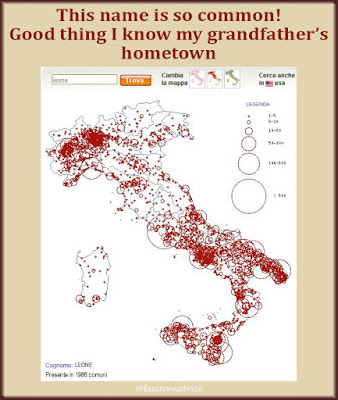When you're researching your family tree and trying to find a family's missing document, what do you do?
You probably go to your favorite genealogy website and enter as much information as you know about the family. Everyone's full names, when and where they were born, and where you think they lived at the time.
But what if your search finds nothing?
 |
| Try using no last name for your search. |
Last night I was trying to find the 1940 census record for a particular family. I'd already found plenty of other documents for them. I had the names and approximate birth years for the parents and all the children. And I knew they lived in the Bronx.
I was sure a search for a family with these eight specific names had to get me the results I wanted. But no.
This is the time to try a creative search. Use several combinations of information until you find your document. Try searching with:
- No last name.
- No first name for the head of household.
- No birth year for the head of household.
- No place of birth for the head of household.
- No spouse's name.
- Fewer kids names.
When I couldn't find the Moylan family in the Bronx in 1940, I let their first names be the main search factor. I searched for them with no last name.
And it worked! I found a family with the correct first names living in the Bronx. Somehow the census taker wrote down the wife's maiden name instead of the family name. So the entire group was wrongly listed as Cunningham, and indexed as Cunningham.
 |
| Right people, wrong last name! Did Mary forget she was married? :-) |
I was sure I had the right family. Yes, I knew the wife's maiden name was Cunningham. But even if I didn't, I had a match on eight first names, and everyone's age and place of birth.
This search technique won't locate all your missing documents, but keep it in mind.
Use a "less is more" search and you may find more and more of those missing genealogy treasures.



